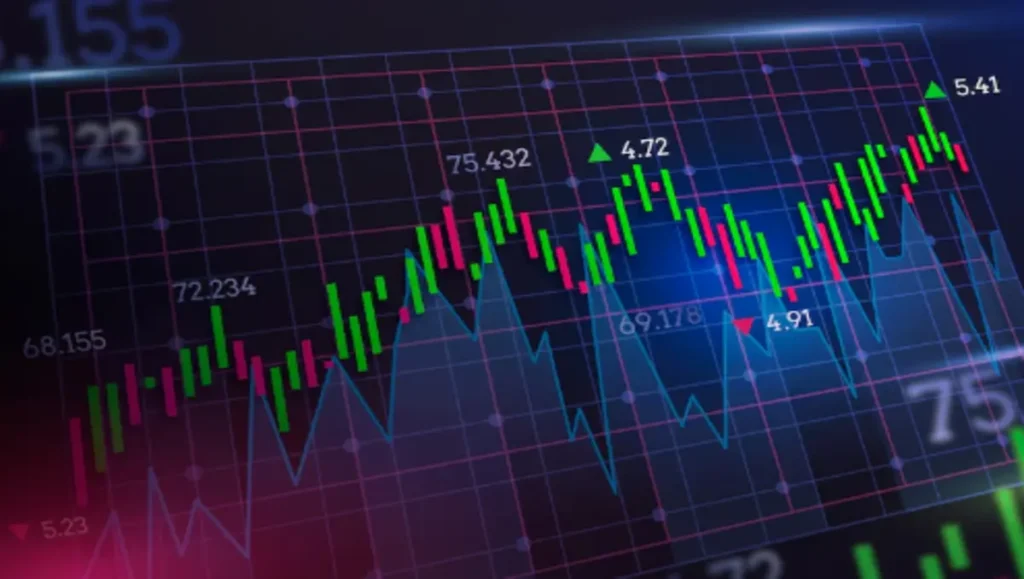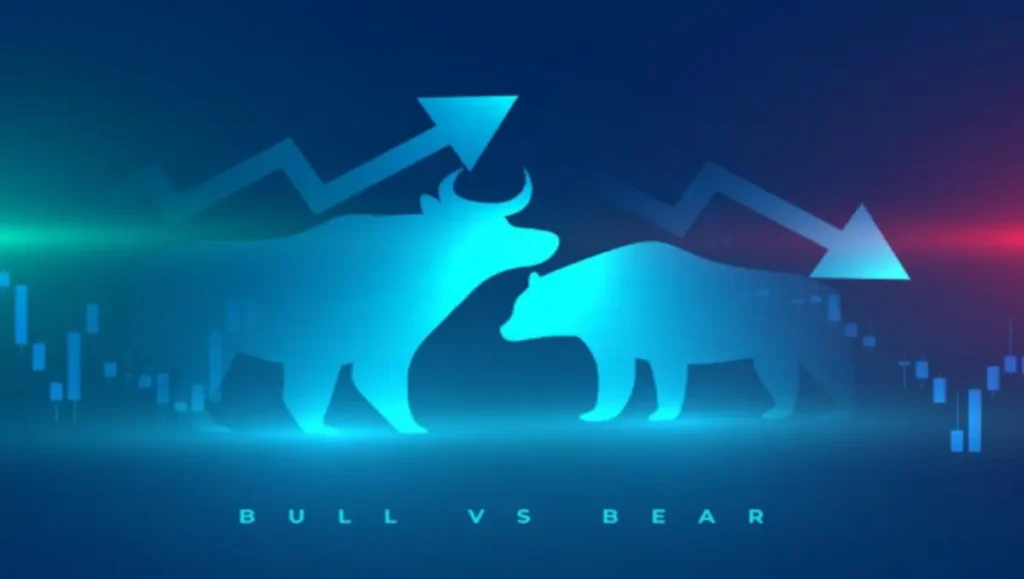Day trading is one of the most intriguing and fast-paced ways to engage in the financial markets. If you’ve heard about it, you’ve probably wondered if it’s a good option for you to make money or grow your wealth. In this guide, we’ll break down what day trading is, how it works, and how you can start day trading while making it a simple and accessible concept for you.
What is Day Trading?
Day trading involves buying and selling financial assets like stocks, currencies, or commodities within the same trading day. The goal is to capitalize on small price movements and make a profit in a short period. Unlike long-term investing, where you might hold onto your assets for years, day traders are focused on short-term gains, often opening and closing several trades in a single day.
The concept might sound simple – buy low, sell high – but day trading requires a deep understanding of market behavior, timing, and strategy. The key is to be in and out of the market quickly to avoid holding onto positions overnight, reducing exposure to unforeseen risks.
How Does Day Trading Work?
In essence, day trading is all about taking advantage of market volatility within a single trading session. Traders make multiple trades based on technical analysis, which includes patterns, indicators, and chart data, rather than on the fundamental value of a company or asset. Here’s how day trading works in practice:
- Choosing a Market: Before you start, you need to decide what market you want to trade in. Stocks, options, forex, and commodities are popular options.
- Opening Positions: You can go long (buy) or short (sell) depending on whether you think the price of an asset will rise or fall. The idea is to enter a position at a low price and exit at a higher price (or the opposite if you short).
- Executing Trades: Traders use online brokerage platforms that allow them to buy and sell assets in real-time. The faster you can execute trades, the better your chances of making a profit.
- Managing Risk: Day traders often use stop-loss orders to limit potential losses. A stop-loss order automatically sells a position if the price moves against the trader by a certain amount, ensuring they don’t lose too much money in a single trade.
- Closing Positions: Once a position has reached a certain level of profitability, traders close it out, often to lock in the gains before the market moves against them. This process happens within the same trading day.
Why Do People Day Trade?
Day trading appeals to many because it offers the potential for fast profits. The financial markets are constantly moving, and day trading allows individuals to capitalize on short-term fluctuations. Some of the reasons people day trade include:
- High Earning Potential: With the right skills, day traders can earn significant profits. The rapid movements in markets create opportunities for skilled traders to make money.
- Flexibility: Unlike traditional jobs, day trading offers the flexibility of working from anywhere and on your schedule. All you need is an internet connection and a computer or mobile device.
- Thrill of the Markets: Many day traders enjoy the adrenaline rush that comes with making fast trades. It’s a mentally engaging and exciting way to make money, especially if you’re someone who enjoys challenges.
- Independence: For those who prefer not to work under a boss or in a structured environment, day trading offers the independence to make decisions and operate on your own terms.

The Risks of Day Trading
While the rewards can be tempting, day trading also comes with significant risks. It’s important to understand that you could lose money as quickly as you make it. Some risks associated with day trading include:
- Market Volatility: Prices can change rapidly, and it’s easy to get caught on the wrong side of a trade. Sudden movements can lead to quick losses.
- Emotional Stress: The fast pace of day trading can be mentally taxing. If you’re not careful, emotions like fear and greed can drive your decisions, leading to mistakes.
- Overtrading: It’s tempting to trade frequently to capture every opportunity, but overtrading can quickly eat into your profits due to transaction costs or poor decision-making.
- Leverage Risks: Many day traders use leverage, meaning they borrow money to trade larger positions. While leverage can amplify profits, it can also magnify losses.
- Lack of Predictability: While technical analysis helps predict market movements, the market is unpredictable, and no strategy guarantees success. Even experienced traders face losses.
How to Start Day Trading
Getting started with day trading doesn’t require a large upfront investment, but it does require time, practice, and understanding of the markets. Here’s a step-by-step guide to get you started:
1. Educate Yourself: The first step is learning about the financial markets and the basics of day trading. Read books, take online courses, and watch video tutorials on the topic. Understanding how the markets function and the tools used by traders is essential.
2. Choose a Reliable Broker: You’ll need to open an account with a brokerage that supports day trading. Look for a broker with low commissions, a fast and user-friendly trading platform, and good customer support.
3. Paper Trade First: Many brokers offer demo accounts where you can practice trading without real money. This is a great way to get familiar with the platform and develop your strategy without risking your capital.
4. Develop a Trading Strategy: Successful day traders often have a specific strategy in place that dictates when to buy and sell. Popular strategies include scalping, momentum trading, and range trading. Experiment with different strategies to find one that suits you.
5. Start Small: Once you’re ready to trade with real money, start with a small amount. This will help you gain confidence and avoid significant losses while you’re still learning.
6. Risk Management: Use stop-loss orders and only risk a small percentage of your capital on each trade. Many successful day traders recommend risking no more than 1-2% of your total capital on each trade.
7. Review Your Performance: Regularly review your trades to understand what’s working and what isn’t. Keep a trading journal to track your progress and learn from both your successes and failures.
Key Concepts in Day Trading
To succeed in day trading, you’ll need to understand some key concepts and tools:
- Technical Analysis: This is the study of price movements using charts and indicators. Common tools include moving averages, RSI (Relative Strength Index), and candlestick patterns.
- Volume: Volume refers to the number of shares or contracts traded during a given period. High volume often indicates strong price movement, while low volume can signal a lack of interest in an asset.
- Volatility: Volatility measures how much an asset’s price fluctuates. High volatility provides more opportunities for day traders, but it also increases risk.
- Liquidity: Liquidity refers to how easily an asset can be bought or sold without affecting its price. Stocks with high liquidity are generally easier to trade.
- Risk/Reward Ratio: This ratio helps determine the potential return of a trade relative to the risk involved. A good risk/reward ratio ensures you’re making trades that have a higher chance of success.

Day Trading Strategies for Beginners
As a beginner, it’s important to stick to simple and proven strategies. Here are a few beginner-friendly day trading strategies:
- Scalping: This strategy involves making many small trades throughout the day to capitalize on tiny price movements. Scalping requires quick decision-making and a solid understanding of market trends.
- Momentum Trading: Momentum traders look for stocks that are moving strongly in one direction (up or down) and attempt to catch the price move. This strategy works best when there’s significant news or an earnings report driving the price.
- Swing Trading: While not technically a form of day trading, swing traders hold positions for several days, capitalizing on short-to-medium-term price moves. Swing trading requires more patience than typical day trading.
Conclusion
Day trading can be a rewarding but challenging way to make money in the financial markets. It offers the potential for high returns, but it also comes with significant risks. By educating yourself, choosing the right tools, and practicing a disciplined strategy, you can increase your chances of success in day trading.
read more
https://financekhush.com/passive-income-how-to-make-money-in-2025/
If you’re just starting, take it slow, learn as much as you can, and be patient with your growth. Remember, day trading is a marathon, not a sprint – and with the right approach, you can turn it into a profitable venture.
Faq’s
1. What is day trading?
Day trading is the practice of buying and selling financial assets such as stocks, commodities, or currencies within a single trading day. The aim is to capitalize on small price movements during the day.
2. How much money do I need to start day trading?
The amount you need to start depends on the market you’re trading in and the broker you choose. However, many experts recommend starting with at least $500 to $1,000 for stocks or options. Keep in mind that the more capital you have, the more you can trade, but it also increases the risk.
3. Can you make money day trading?
Yes, it’s possible to make money day trading, but it’s not guaranteed. Day trading involves significant risk, and many beginners lose money. Success depends on knowledge, experience, strategy, and discipline.
4. What is the best strategy for day trading?
There are several strategies, but the most common are:
- Scalping: Making small, rapid trades to profit from tiny price changes.
- Momentum trading: Capitalizing on stocks that are trending.
- Swing trading: Holding positions for a few days to catch short-term price movements.
5. What are the risks involved in day trading?
Day trading carries substantial risks due to the volatility of the markets. Risks include market fluctuations, emotional decision-making, overtrading, and the possibility of losing your invested capital. Using leverage can increase both your potential profits and losses.
6. Do I need to follow the news to be a successful day trader?
While it’s not required, staying informed about current events and news can help you understand market movements, especially for stocks or commodities that react strongly to news, earnings reports, or economic announcements.
7. What tools do I need for day trading?
To day trade effectively, you’ll need:
- A fast, reliable internet connection.
- A trading platform or brokerage account.
- Real-time market data and charts.
- A risk management tool, such as stop-loss orders.
8. How do I manage risk in day trading?
Risk management is crucial to protect your capital. Common practices include:
- Setting a stop-loss to limit potential losses.
- Using the 1-2% rule (only risk 1-2% of your total capital on each trade).
- Diversifying your trades to avoid being too concentrated in one asset.
9. Can I day trade part-time?
Yes, you can day trade part-time. Many traders work full-time jobs and trade during market hours or when opportunities arise. However, it requires commitment to learning and managing your trades effectively.https://jankaritop.com/
10. How long does it take to become a successful day trader?
Becoming successful at day trading varies from person to person. It can take anywhere from a few months to a few years, depending on how much time and effort you put into learning, practicing, and refining your strategy. Patience and experience are key.

2 thoughts on “What is Day Trading? A Simple Guide To Beginners in 2025”